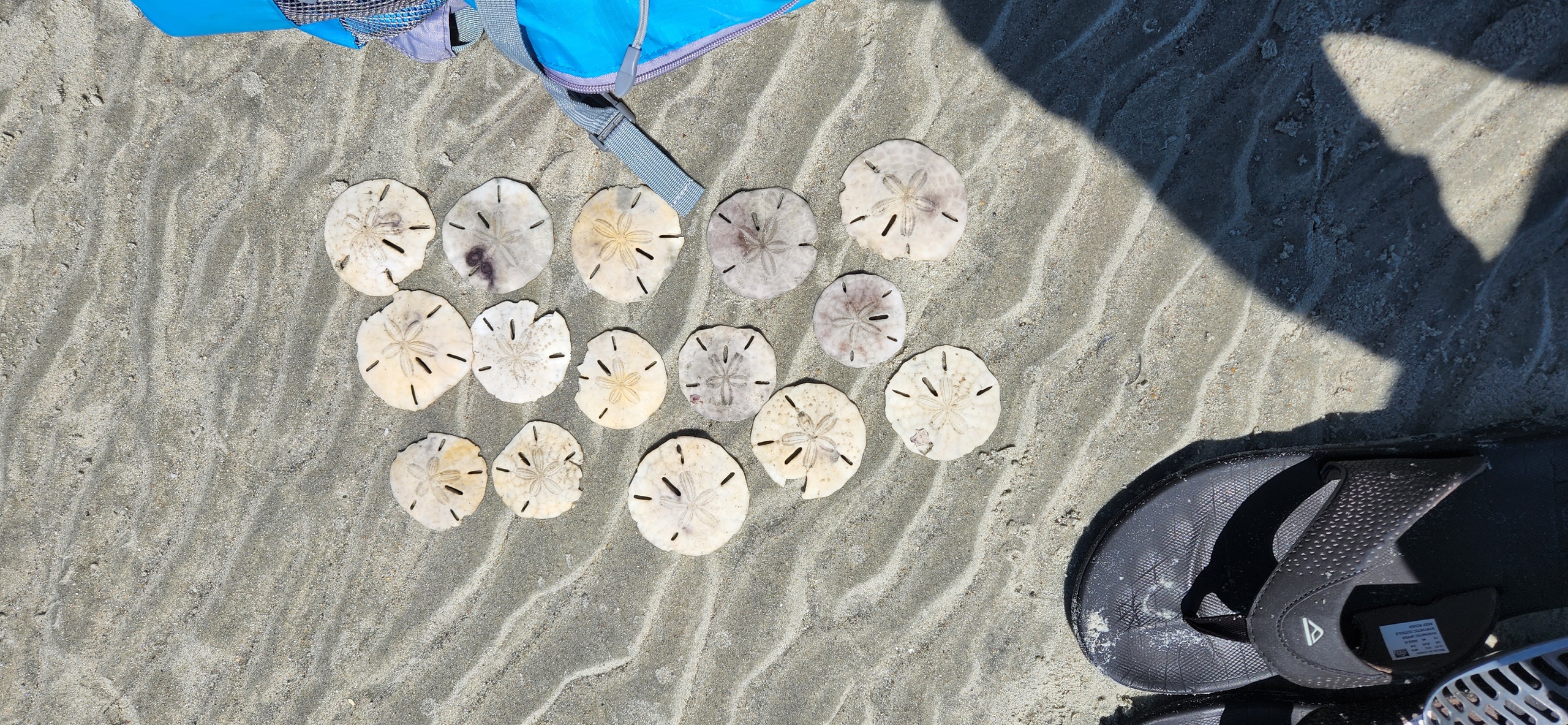Essential Gear for a Wild Horse Trail Walk on Shackleford Banks
Shackleford Banks offers a rare chance to walk alongside wild horses in a pristine coastal environment. This guide breaks down the essential gear and preparation tips to ensure your trail walk is safe, comfortable, and deeply rewarding.
Prioritize Hydration
Bring at least 2 liters of water per person and supplement with electrolytes, as the island offers no fresh water sources.
Wear Supportive, Quick-Dry Footwear
Choose trail shoes or boots with good traction that dry quickly to handle sandy and sometimes marshy terrain comfortably.
Avoid High Tide
Plan your hike around low tide to keep the sandy shorelines accessible and reduce risk of water crossings or marshy ground.
Respect Wild Horses’ Space
Maintain a safe distance from the horses to preserve their natural behavior and your safety; binoculars can help with viewing.
Essential Gear for a Wild Horse Trail Walk on Shackleford Banks

A 3-Island Tour: Sand Dollars, Wild Horses, and a Lighthouse!!
Optional $200 Deposit • Sand Dollars, Wild Horses, and a Lighthouse, Oh My! Up to 6 hours.
Discover untouched barrier islands on a guided boat tour from Morehead City. Encounter wild horses, collect shells on Sand Dollar Island, and marvel at the Cape Lookout Lighthouse—an adventure perfect for nature lovers and history buffs alike.
A walk along the Shackleford Banks Wild Horse Trail takes you into the raw pulse of coastal North Carolina. The trail stretches approximately 5 miles one-way across shifting sands, salt-kissed pine groves, and sweeping dunes where wild horses roam freely, asserting their ancient claim. Elevation gain is minimal—generally under 100 feet—but the terrain demands respect: fine sand, tidal pools daring your path, and exposed roots reminding you of the island’s unyielding spirit.
Successful navigation here hinges on balance between preparation and immersion. Pack footwear with sturdy tread that can handle loose sand and occasional rocky patches without weighing you down. Lightweight hiking boots or trail runners with quick-dry capabilities work best. The island’s elements move with intent—the sun arcs relentlessly, and salty breezes nudge your every step.
Hydration is non-negotiable on this stretch. At least two liters per person is a sound baseline, paired with electrolyte supplements if the weather presses above 80°F. Water sources are nonexistent; every drop must start in your pack.
Dress in layers built for sun and sudden coastal breezes. Breathable, moisture-wicking fabrics save you from sweat saturation and chill in the shade. A wide-brimmed hat and UV-blocking sunglasses shield against glare where the sky spills endlessly. Don’t forget insect repellent—the salt marsh fringe is home to persistent mosquitos, especially during dawn and dusk.
A lightweight daypack with compartments for snacks, maps, and a first aid kit aligns perfectly with the trail’s rugged, off-grid character. Bring binoculars for spotting horses from a respectful distance—they move like whispers, wary and fiercely independent.
Timing your trek early morning or late afternoon offers cooler temperatures and vibrant light ideal for both comfort and photography. Avoid high tide hours where water encroaches and sand becomes marshy underfoot.
Walking Shackleford Banks is an encounter with nature unvarnished—a place where wild horses roam fiercely themselves, and the landscape challenges you to tread lightly, watch carefully, and experience fully.
Nearby Trips
All Adventures
Boat Charters
Water Activities
Adventures near Beaufort
Discover the unique and memorable adventures that make Beaufort special.
Frequently Asked Questions
Are dogs allowed on the Wild Horse Trail?
Dogs are not allowed on Shackleford Banks to protect the fragile ecosystem and avoid disturbing the wild horses and wildlife.
How close can I get to the wild horses?
For safety and conservation reasons, it’s recommended to keep a minimum distance of 50 yards from the horses to avoid startling them.
Is the trail well-marked?
The trail is loosely marked, mainly following natural landmarks and shoreline contours. Carry a map or GPS device and be comfortable with basic navigation.
Can I camp overnight on Shackleford Banks?
No, camping is prohibited on Shackleford Banks as it is a protected island managed by the National Park Service to preserve its natural state.
What wildlife might I see besides horses?
Expect to see shorebirds like piping plovers, sea turtles during nesting season, raccoons, and osprey soaring overhead.
What is the best tide time to hike?
Low tide offers the most accessible and safest route along the shore, avoiding impassable marshy patches or tidal pools.
Recommended Gear
Hydration Pack or Water Bottles
Essential to stay hydrated throughout the hike, especially during hotter months with no water refill points.
Sturdy Trail Shoes or Lightweight Hiking Boots
Provide grip and support for sandy, uneven surfaces, and dry quickly if splashed by salt water.
Wide-Brimmed Hat
Shields your face and neck from the relentless coastal sun, reducing risk of sunburn and heat fatigue.
Binoculars
Aids in observing wild horses and birdlife from a respectful distance without disturbing their habitat.
Local Insights
Hidden Gems
- "The offshore sand spit near the eastern tip where horses gather quietly at dawn"
- "The sheltered maritime forest with scattered old live oaks – an unexpected cool respite"
Wildlife
- "Feral Banker horses unique to this area"
- "Endangered shorebirds like the least tern and piping plover"
- "Occasional sea turtles nesting on quiet stretches"
History
"Shackleford Banks holds a legacy as part of the Outer Banks barrier islands, named after Jonathan Shackleford, a landowner from the 18th century. The wild horses descend from Spanish mustangs shipwrecked centuries ago, surviving as a living link to the past."
